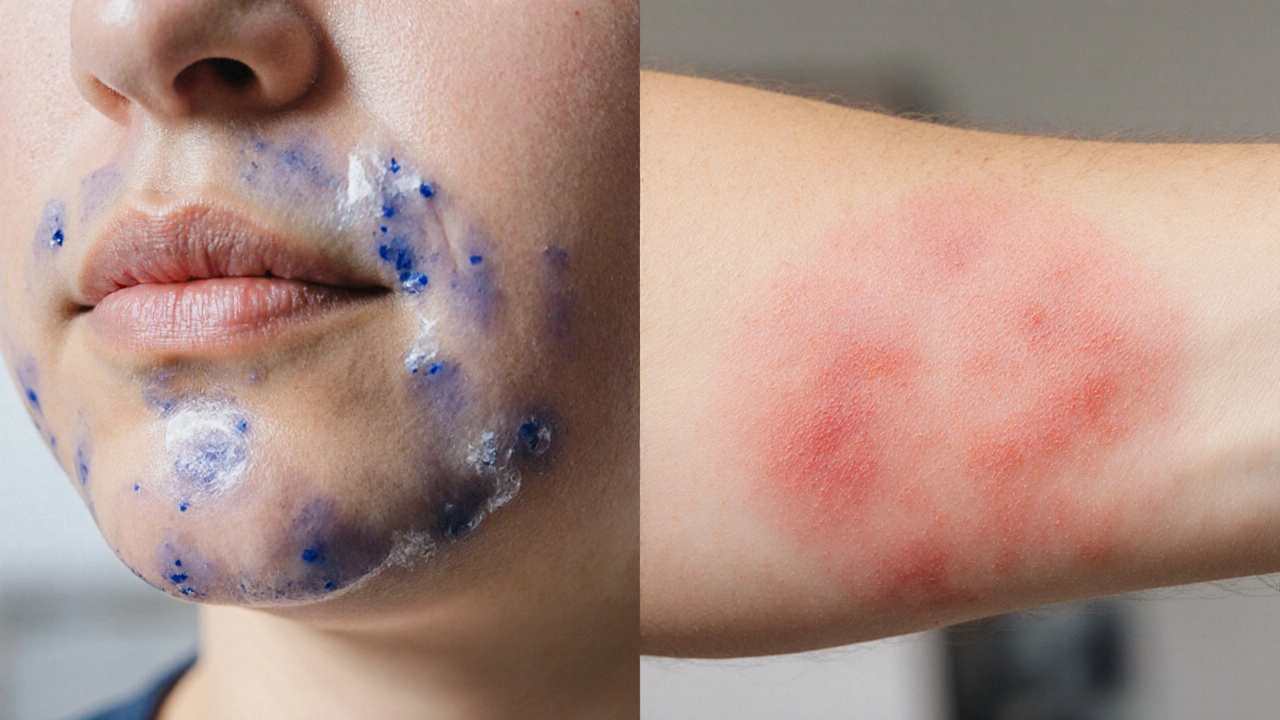Urticaria: What You Need to Know
When dealing with urticaria, a sudden, itchy skin rash that shows up as raised welts. Also known as hives, it usually follows an allergic trigger or an immune system over‑reaction. Understanding the basics helps you spot it early and choose the right action.
How Urticaria Starts
The core of the reaction is mast cells, immune cells that release histamine when they sense an invader. When histamine floods the skin, tiny blood vessels expand, creating the red, raised bumps that itch like crazy. Common triggers include foods (nuts, shellfish), insect stings, medicines (like antibiotics or NSAIDs), and even stress. Some people notice a pattern—certain perfumes or fabrics can set off the flare‑up, while others get a random bout with no clear cause.
Not every rash is urticaria, and not every itch means an allergy. Doctors often ask about recent meals, new skincare products, or medication changes to narrow down the cause. Blood tests or allergy panels might be ordered if the episodes are frequent or severe. Identifying the trigger is the first step toward lasting relief.
When it comes to calming the itch, antihistamines, drugs that block histamine receptors to stop the swelling and itching are the go‑to treatment. Over‑the‑counter options like cetirizine or loratadine work for most people, while stronger prescription antihistamines are reserved for stubborn cases. If the welts last longer than 24 hours or spread quickly, a short course of oral steroids may be prescribed to shut down the immune response.
Interestingly, some of the medications featured in our article library—such as the immunosuppressant tacrolimus or the pain reliever ketorolac—can themselves act as triggers for urticaria. That’s why it’s crucial to read side‑effect profiles carefully, especially if you have a history of hives. Our comparison guides break down which drugs are more likely to cause skin reactions, helping you avoid surprises.
Beyond medicines, lifestyle tweaks can reduce flare‑ups. Keeping a symptom diary pinpoints hidden allergens, while cool showers, loose cotton clothing, and avoiding hot baths lower skin irritation. For chronic urticaria that lasts weeks or months, doctors may explore deeper causes like autoimmune disorders or chronic infections. In those cases, treatments such as omalizumab—a monoclonal antibody that targets IgE—can provide relief when antihistamines fall short.
When to see a doctor? If you experience swelling of the lips, tongue, or throat, or if you develop difficulty breathing, treat it as an emergency—these are signs of anaphylaxis, not ordinary hives. Even without life‑threatening symptoms, persistent or worsening rash warrants a professional opinion to rule out underlying disease and to fine‑tune your medication plan.
Our collection below pulls together practical guides on medication safety, diet strategies for skin health, and step‑by‑step treatment comparisons. Whether you’re looking for the best antihistamine, want to understand how low‑FODMAP diets may affect skin inflammation, or need tips on buying safe generic drugs online, you’ll find focused, easy‑to‑read resources that complement the urticaria basics you just learned.
Take a look at the articles that follow—you’ll discover deeper insights on triggers, treatment options, and real‑world drug comparisons that can help you manage urticaria more confidently.

Angioedema vs. Hives: Key Differences and How to Manage Them
Haig Sandavol Oct 3 17Learn the key differences between angioedema and hives, their causes, symptoms, treatment options, and when to seek emergency care.
More Detail